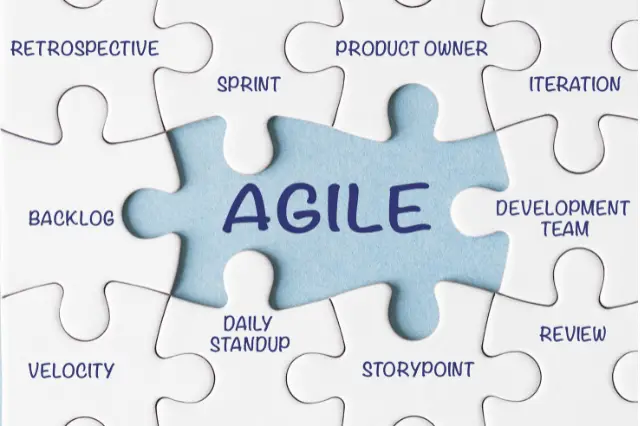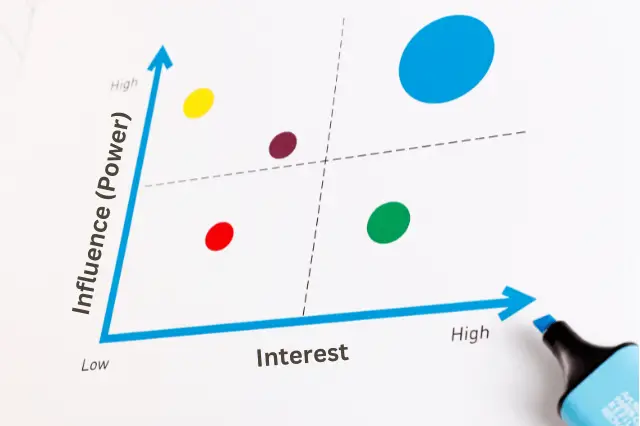Last Updated on November 10, 2024 by andrewshih
Conflict is an inevitable part of any project.
It arises from differences in perspectives, goals, and approaches among team members. Effective conflict management is crucial for maintaining a productive and harmonious work environment.
We will explore various conflict management techniques and strategies, providing practical examples to help project managers handle conflicts effectively.
Understanding Conflict in Project Management
Conflict in project management refers to any disagreement or clash between team members or stakeholders. It can stem from various sources, such as:
- Resource Allocation: Competition for limited resources can lead to disagreements.
- Scheduling: Conflicts may arise from differing timelines and deadlines.
- Scope Creep: Uncontrolled changes to project scope can cause disputes.
- Communication Issues: Misunderstandings and lack of communication can escalate into conflicts.
- Cultural Differences: Diverse backgrounds can result in varying work styles and expectations.
- Personality Clashes: Differences in personalities can lead to friction among team members.
- Priorities: Conflicts can arise when team members or stakeholders have differing priorities.
Addressing these conflicts promptly and effectively is vital to ensuring the project’s success and maintaining team morale.
Conflict Management Techniques
Here are 5 conflict management techniques that project management professionals need to know.
Compromise/Reconcile: (Lose-Lose)
- Description: This technique involves finding a middle ground where each party gives up something to reach a mutually acceptable solution. Although it often results in a lose-lose situation because neither party gets everything they want, it is a practical approach for achieving quick resolutions.
- When to Use: Compromise is suitable when both parties have equal power and influence, and a quick resolution is needed. It is often used in conflicts involving moderately important issues.
- Example: During a project meeting, two team members have differing opinions on the project’s scope. By finding a middle ground, both parties agree to incorporate elements of each other’s ideas, ensuring progress continues smoothly.
Force/Direct: (Win-Lose)
- Description: This technique involves pushing one’s viewpoint at the expense of others, leading to a win-lose situation. It is assertive and uncooperative, relying on authority to resolve the conflict.
- When to Use: Force or direct is effective in emergencies or when quick, decisive action is necessary. It is suitable when the stakes are high, and a decision must be enforced promptly.
- Example: In a critical project phase, a project manager enforces a specific approach to meet tight deadlines, despite some team members’ objections. The decisive action ensures the project stays on track.
Collaborate/Problem Solve: (Win-Win)
- Description: Collaboration involves working together to find a win-win solution that satisfies all parties. It is both assertive and cooperative, focusing on understanding and addressing the underlying concerns.
- When to Use: Use collaboration when the issue is too important for a compromise and a long-term solution is needed. It is suitable for complex problems where different perspectives can lead to a better outcome.
- Example: During a project, team members from different departments collaborate to address a critical issue. By leveraging their diverse expertise, they develop an innovative solution that benefits the entire project.
Smooth/Accommodate: (Lose-Win)
- Description: Smoothing involves emphasizing areas of agreement rather than differences to maintain harmony. It often results in a lose-win situation where one party gives in to the others.
- When to Use: Use smoothing when the issue is more important to the other party or when maintaining relationships is more critical than resolving the conflict. It is suitable for minor issues.
- Example: A project manager smooths over a minor disagreement between team members to maintain a positive working environment. By focusing on shared goals, the team continues to work cohesively.
Withdraw/Avoid
- Description: This technique involves postponing or avoiding the conflict, hoping it will resolve itself or become irrelevant over time. It is both unassertive and uncooperative.
- When to Use: Withdrawal is appropriate when the issue is trivial, when there’s no chance of winning, or when more time is needed to prepare for a resolution. It is also suitable if the conflict is part of a larger pattern that needs to be addressed later.
- Example: A project manager avoids a minor conflict over resource allocation, knowing it will become irrelevant once the next project phase begins.
Video for Managing Conflict in Project Management
In the video below, David McLachlan explains the 5 conflict management techniques covered in this article.
Conflict Resolution Strategies in Project Management
Effective conflict resolution strategies are essential for maintaining a productive project environment. Here are five strategies to consider:
#1 Active Listening
Actively listen to all parties involved in the conflict. This approach helps in understanding their perspectives and finding common ground.
#2 Open Communication
Encourage open and honest communication among team members. This transparency helps in addressing issues before they escalate into conflicts.
#3 Establish Clear Roles and Responsibilities
Clearly define the roles and responsibilities of each team member. This clarity can prevent misunderstandings that often lead to conflicts.
#4 Regular Team Meetings
Hold regular team meetings to discuss progress, address concerns, and foster a collaborative environment.
#5 Conflict Mediation
Act as a mediator to facilitate discussions between conflicting parties. Mediation helps in finding mutually acceptable solutions.
Examples of Conflicts in Project Management
Understanding real-world examples of conflicts can help in developing effective conflict management strategies:
- Resource Allocation Conflict:
- Two team members require the same resource simultaneously. The project manager compromises by reallocating resources from another project to meet both team members’ needs.
- Scope Creep Conflict:
- A client requests additional features outside the agreed scope. The project manager collaborates with the client to prioritize features, ensuring the project remains on schedule and within budget.
- Team Conflict Due to Cultural Differences:
- Team members from different cultural backgrounds have different working styles. The project manager smooths over differences by organizing team-building activities that promote understanding and collaboration.
- Time Constraint Conflict with Sponsor:
- The project sponsor insists on an earlier deadline than originally planned. The project manager collaborates with the sponsor to find a feasible solution, such as increasing resources or adjusting the project scope to meet the new deadline without compromising quality.
- Budget Constraint Conflict with Management:
- The management reduces the project’s budget, impacting critical resources. The project manager negotiates with management to secure additional funding or identifies cost-saving measures that align with the reduced budget while maintaining project quality.
- Resource Constraint Conflict with Sponsor:
- The project sponsor requests additional deliverables without providing additional resources. The project manager collaborates with the sponsor to prioritize deliverables, ensuring the most critical tasks are completed within the available resources.
Conclusion
Managing conflict in project management is a critical skill that involves understanding different conflict management techniques and knowing when to apply them.
By fostering open communication, active listening, and collaboration, project managers can effectively resolve conflicts and maintain a positive project environment.
Implementing these strategies ensures that conflicts are addressed promptly, leading to successful project outcomes and a harmonious team dynamic.
FAQ
What are the common sources of conflict in project management?
Common sources of conflict include differences in opinions, miscommunication, resource allocation issues, differing project goals, and cultural differences among team members.
How can project managers effectively handle conflicts arising from resource allocation?
Project managers can handle resource allocation conflicts by compromising, reallocating resources from other projects, or adjusting project schedules to ensure all team members have the resources they need.
What strategies can be used to prevent scope creep conflicts?
To prevent scope creep conflicts, project managers should establish clear project scopes, regularly communicate with clients about project limits, and prioritize features to ensure the project stays on schedule and within budget.
How can active listening help in resolving conflicts?
Active listening helps in resolving conflicts by allowing all parties to express their perspectives, fostering mutual understanding, and identifying common ground for a resolution.
What is the role of conflict mediation in project management?
Conflict mediation involves acting as a neutral facilitator to help conflicting parties discuss their issues and find mutually acceptable solutions, promoting a collaborative and harmonious project environment.
How can regular team meetings contribute to conflict management?
Regular team meetings provide a platform for discussing progress and addressing concerns early. The team meetings also foster open communication, and building a collaborative environment, which can prevent conflicts from escalating.



